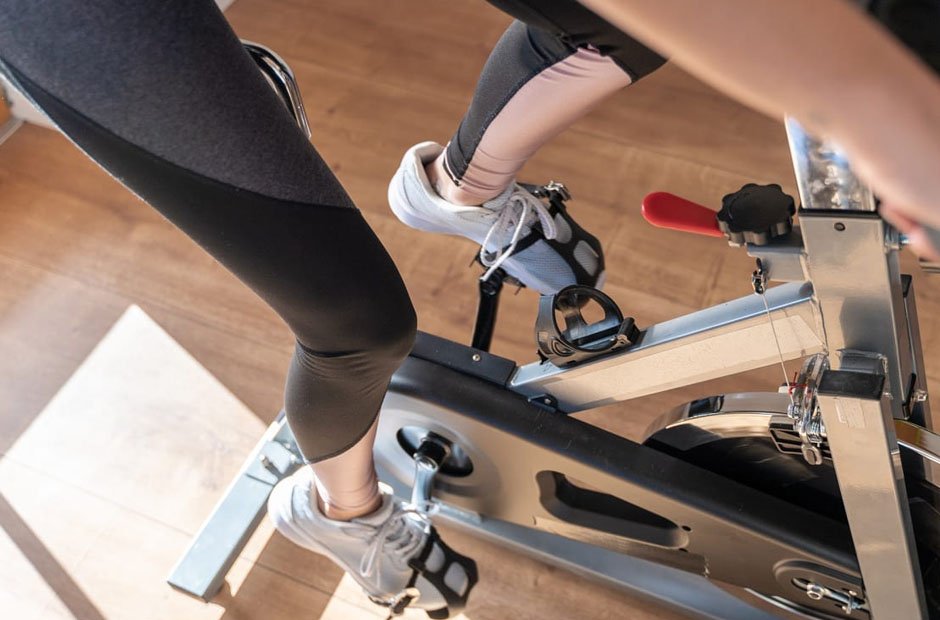Skip to the good bit
ToggleSetting up your new exercise bike at home is an exciting step toward achieving your fitness goals. Whether you’re looking to improve cardiovascular health, build strength, or simply stay active, an exercise bike offers a convenient and effective workout option.
However, proper setup is crucial to ensure you get the most out of your new equipment while staying safe and comfortable. Here’s a step-by-step guide on how to set up your new exercise bike at home.
1. Choose the Right Location
Before you start assembling your exercise bike, choose the best location for it. Ideally, you want a spot that is spacious, well-ventilated, and free from obstructions. Consider placing the bike in a room where you can watch TV or listen to music to keep yourself entertained during workouts.
Ensure that the floor is level and strong enough to support the bike and your weight. If you have hardwood floors or tiles, placing a mat underneath the bike can protect the floor and reduce noise. A mat also prevents the bike from sliding during intense workouts.
Also, look for exercise bikes for sale that are ideal for your room.
2. Unbox and Organize the Parts
Once you’ve chosen the perfect spot, it’s time to unbox your exercise bike. Carefully remove all the components from the packaging and lay them out on the floor. Most exercise bikes come with an instruction manual that includes a parts list. Take a few minutes to check that all parts are present and in good condition.
Organizing the parts by grouping them according to the steps in the assembly process can make the setup more manageable. Keep any small screws, bolts, and tools in a secure place to prevent them from getting lost.
3. Assemble the Frame
The next step is to assemble the frame of your exercise bike. Follow the manufacturer’s instructions carefully, as assembly procedures can vary depending on the model. Generally, you’ll need to attach the front and rear stabilizers to the main frame first. These stabilizers are crucial for keeping the bike steady during use.
Once the stabilizers are securely attached, you can move on to installing the pedals. Make sure you attach the right pedal to the right crank arm and the left pedal to the left crank arm. This step is important because the threads on the pedals are designed to tighten in the opposite direction to prevent them from loosening during use.
4. Install the Seat and Handlebars
After assembling the frame, it’s time to install the seat and handlebars. The seat should be adjustable both vertically and horizontally to accommodate different body types and ensure a comfortable riding position. To set the correct seat height, stand next to the bike and adjust the seat so it’s level with your hip bone. When you’re seated on the bike, your leg should be slightly bent at the knee when the pedal is at its lowest point.
Next, attach the handlebars, ensuring they are at a comfortable height and distance from the seat. The handlebars should allow you to maintain a relaxed grip with your elbows slightly bent while riding. If the handlebars are adjustable, experiment with different positions until you find one that feels most comfortable.
5. Connect the Console and Electronics
Most modern exercise bikes come equipped with a digital console that tracks your workout progress, including metrics like speed, distance, time, and calories burned. To connect the console, follow the manufacturer’s instructions to ensure all wires and cables are properly connected. Be careful not to pinch or damage any wires during the installation process.
If your exercise bike is equipped with additional features like heart rate monitors or Bluetooth connectivity, now is the time to set those up as well. Ensure that any sensors or devices are securely attached and functioning correctly before you start your first workout.
6. Test and Adjust
Once your exercise bike is fully assembled, it’s time to test it out. Start by pedaling slowly to make sure everything feels stable and secure. Pay attention to any unusual noises or vibrations that could indicate loose bolts or parts. If you notice anything unusual, stop immediately and recheck the assembly instructions to ensure everything is properly tightened.
As you ride, make adjustments to the seat, handlebars, and resistance levels until you find a comfortable and effective workout setup. If the bike comes with pre-programmed workouts or adjustable resistance settings, take some time to familiarize yourself with these features.
7. Maintenance Tips
To keep your exercise bike in top condition, it’s important to perform regular maintenance. Wipe down the frame, seat, and handlebars after each use to prevent sweat from causing rust or damage. Check the pedals, bolts, and other components periodically to ensure they remain tight and secure.
Lubricate the chain or belt (if applicable) according to the manufacturer’s recommendations to keep the bike running smoothly. Finally, keep the console clean and free from dust to ensure accurate tracking of your workout metrics.
Set Up Your New Exercise Bike
Setting up your new exercise bike at home is a straightforward process that, when done correctly, ensures a safe and effective workout experience. By choosing the right location, carefully assembling the bike, and making the necessary adjustments, you’ll be ready to start enjoying the benefits of your new equipment in no time. With proper maintenance, your exercise bike will serve you well for years to come, helping you stay on track with your fitness goals.







